Acting Navy secretary asks for further investigation into carrier stricken by coronavirus
James McPherson, the acting secretary of the Navy, announced Wednesday that he had asked Navy leaders to conduct a more thorough investigation of the circumstances surrounding the COVID-19 outbreak on the USS Theodore Roosevelt.
However, McPherson’s apparent decision not to immediately reinstate the ship’s captain prompted the chairman of the House Armed Services Committee to warn Pentagon leaders not to develop a culture of sycophancy toward President Trump.
McPherson’s announcement came more than two weeks after Vice Chief of Naval Operations Adm. Robert Burke concluded an initial investigation into the Theodore Roosevelt affair and passed it to Chief of Naval Operations Adm. Michael Gilday. It has been widely reported that after reviewing Burke’s findings, Gilday had recommended reinstating Capt. Brett Crozier, the Theodore Roosevelt’s commanding officer.
Crozier was fired by McPherson’s predecessor as acting secretary, Thomas Modly, after an email Crozier sent up his chain of command expressing concern about how the Navy was handling the outbreak was made public. In a statement, McPherson said Wednesday he had received Gilday’s recommendations, but did not say what they consisted of.
“Following our discussion, I have unanswered questions that the preliminary inquiry has identified and that can only be answered by a deeper review,” McPherson said.
“Therefore, I am directing Adm. Gilday to conduct a follow-on command investigation. This investigation will build on the good work of the initial inquiry to provide a more fulsome understanding of the sequence of events, actions and decisions of the chain of command surrounding the COVID-19 outbreak aboard USS Theodore Roosevelt.”
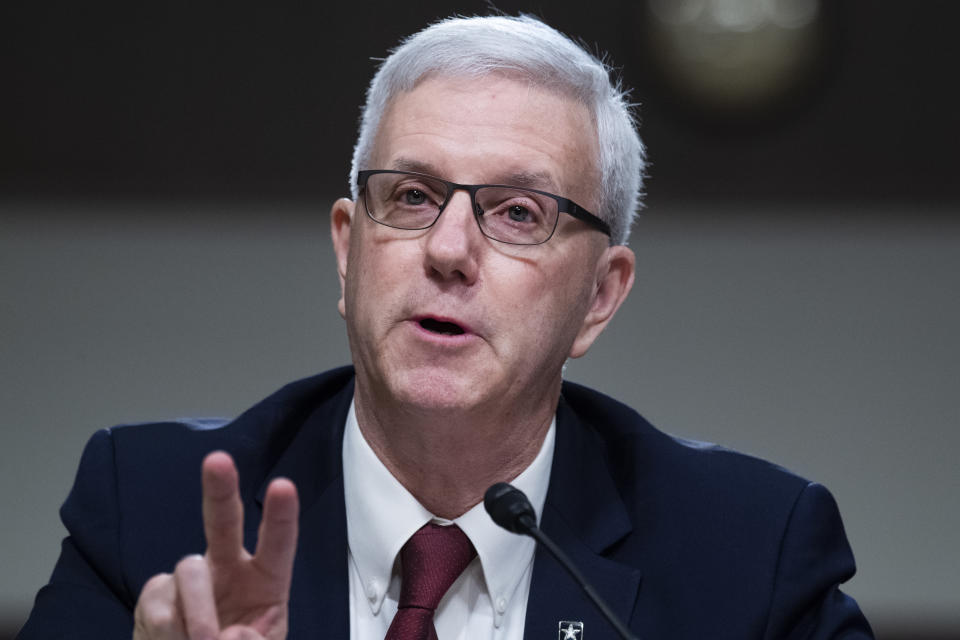
McPherson’s statement said nothing about the fate of Crozier, a fact that drew a swift rebuke from the chairman of the House Armed Services Committee, Democratic Rep. Adam Smith of Washington.
“I personally think Captain Crozier should be reinstated,” Smith told reporters in a call Wednesday morning, noting that he had spoken with McPherson earlier that day. “From everything that’s come out and everything that I’ve seen, there was no reason to relieve him of his command.”
Citing an interview Modly gave to the Washington Post in which the then acting secretary said he wanted to avoid the Navy getting “crossways” with the White House, Smith said he did not want to see the Defense Department become “yet another” part of the federal government “that the Trump administration has browbeaten into the position where they view their job as solely consisting of making sure that they’re kissing up to the president.”
Under the current administration, “the drift towards ‘you must be a sycophant in order to keep your job’ is very troubling,” the congressman said. A way for the Pentagon “to make a strong statement that that’s not where they’re going is to give Captain Crozier his job back,” he added.
While asserting that the question of whether to reinstate Crozier “should have been clearly answered to this point,” Smith stressed that he was not criticizing McPherson’s order to further investigate the outbreak on the Roosevelt, an aircraft carrier.
“It’s perfectly legitimate to extend the investigation about everything that happened with the Roosevelt,” Smith said. “It was the first major outbreak within [the Department of Defense], a difficult situation, so what happened? How did the various people within the chain of command respond to it?”
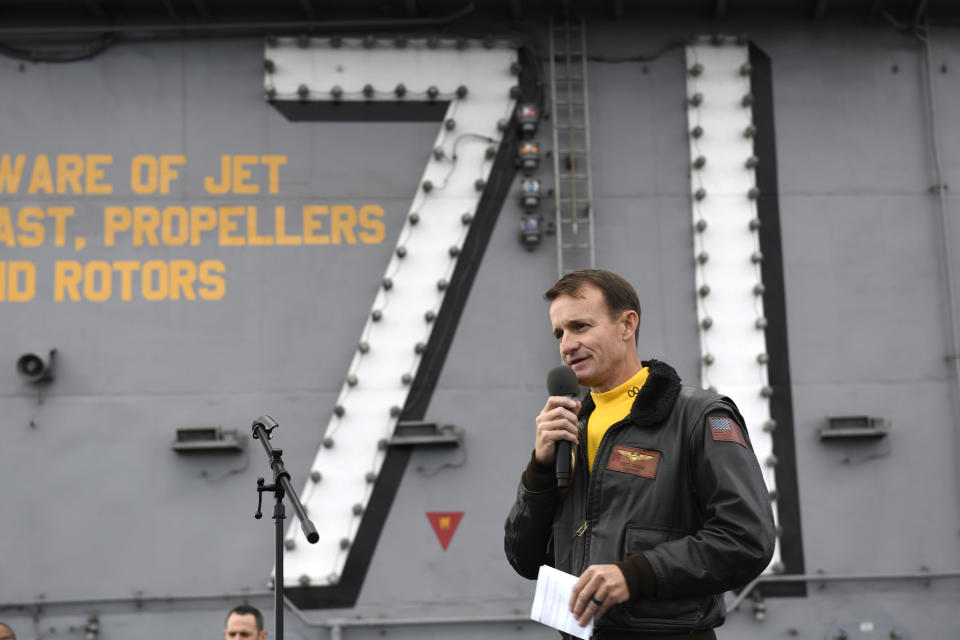
Smith implied that Burke did not have the necessary time to answer all the questions surrounding the Navy’s decision-making process related to the Theodore Roosevelt. “A forensic analysis of that is enormously important, and I completely agree that that’s not something you can get done in a week or two weeks,” he said.
McPherson’s decision to extend the investigation is just the latest twist in a five-week-long saga that has been marked by a series of public relations black eyes for the Navy.
The Theodore Roosevelt’s problems began about two weeks after the carrier pulled away from Danang, Vietnam, on March 9 after a five-day port call. On March 24, the Navy announced that three sailors among the carrier’s roughly 4,865 crew members had tested positive for COVID-19. Within three days, that number had increased to 23 and the Navy had a full-blown crisis on its hands.
On March 27, the Theodore Roosevelt docked in Guam for what the Navy said was a previously scheduled port call, which was then extended so the crew could be quarantined and the rapidly growing number of sailors testing positive could be isolated and, if necessary, treated. The carrier was now sidelined, even though Navy leaders repeatedly said it could put to sea at short notice if required.
Concerned that the Navy was not moving his sailors off the carrier fast enough as the outbreak spiraled out of control, Crozier on March 29 sent an email with an attached memo up his chain of command outlining his fears and urging action. Because of the impossibility of following the social distancing guidelines of the Centers of Disease Control and Prevention in the cramped confines of a warship, “the spread of the disease is ongoing and accelerating,” he wrote.
Crozier recommended moving all but about 10 percent of the crew offshore and into isolation on Guam for a 14-day period. “Sailors do not need to die,” he wrote. On March 31, his memo was published in the San Francisco Chronicle, adding a public relations crisis to the Navy’s problems.
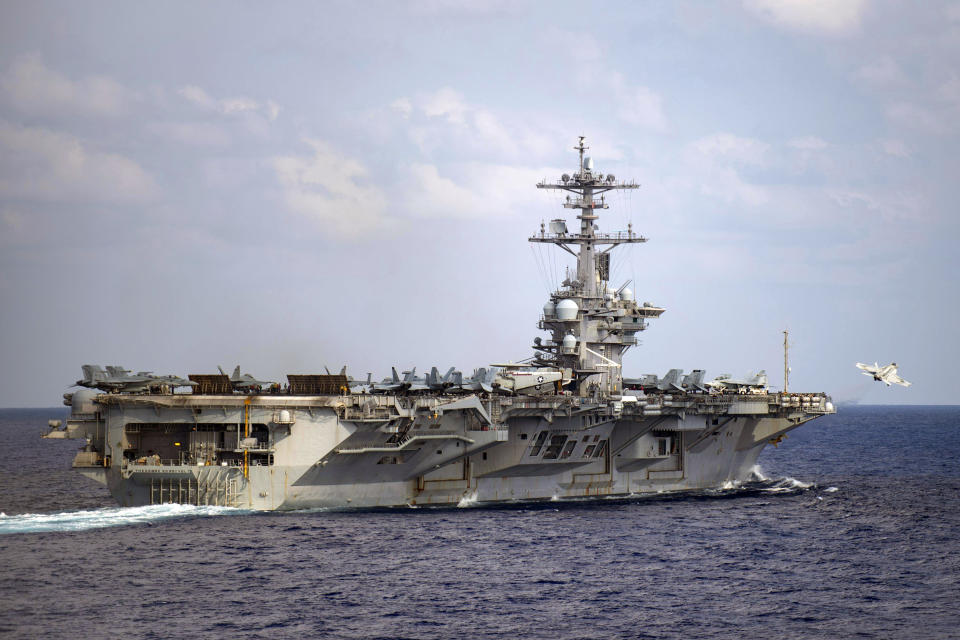
The publication of Crozier’s memo put Navy leaders on the defensive. “My number one priority is the health of the force,” Adm. John Aquilino, the commander of U.S. Pacific Fleet, said during an April 1 call with Pentagon reporters. “We’re taking this extremely seriously.”
Aquilino was the senior officer to whom Crozier’s email had been addressed.
The following day, Modly and Chief of Naval Operations Adm. Michael Gilday held a press conference in which they seemed to adopt different tones toward Crozier without ever mentioning him by name. Modly described himself as “disappointed” at Crozier’s suggestion that the Navy was on the verge of failing to take care of his sailors.
Gilday, however, noted that part of Crozier’s “extraordinary responsibility” as commanding officer was that he is held to account “for the health and well-being of those 4,865 sailors on that ship.” Therefore, Gilday said, if Crozier felt that the Navy wasn’t “acting at the speed of urgency, then absolutely we need to know about that and we need to adjust.”
Navy leaders seemed initially hesitant to fire Crozier, but that changed quickly when Modly perceived frustration on the part of President Trump over the negative publicity being generated by the affair. According to the Washington Post, Modly told a colleague, “Trump wants him [Crozier] fired.”
On April 2, Modly and Gilday were back in the Pentagon Briefing Room to tell reporters in a hastily arranged press conference that Modly had fired Crozier for, essentially, sending the email to too many people. In his remarks, however, Modly significantly exaggerated the number of people that Crozier had “copied” the email to, saying that it had gone to “20 or 30 other people” in addition to two senior admirals, when the actual number was 10.
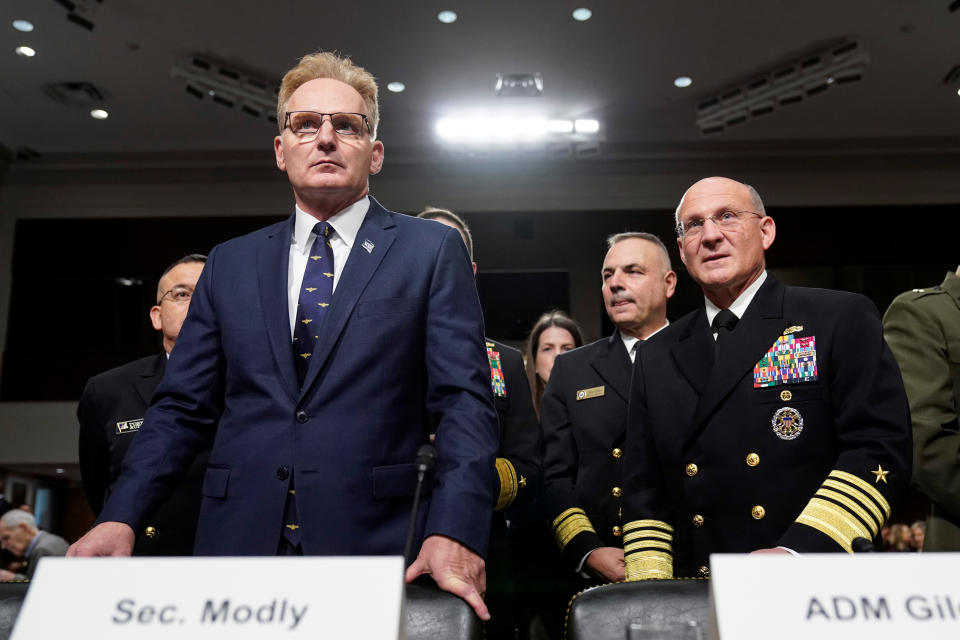
All the recipients of Crozier’s note were active-duty Navy captains or flag officers, including his immediate boss, Rear Adm. Stuart Baker. Almost as an aside, during the press conference Modly mentioned that 114 sailors aboard the Theodore Roosevelt sailors had now tested positive. One of those sailors was Crozier.
Gilday told the reporters that he supported Modly’s decision but made it clear that it was the acting secretary’s decision, not his. “I have been given every opportunity, every step of the way, to provide my advice to the secretary as he came to this decision,” Gilday said.
A former Navy official said that Gilday looked ill at ease. “The body language of Admiral Gilday at both of those press conferences was really telling,” the former Navy official said. “He didn’t want to be there.”
It was also at the April 2 press conference that Modly announced that Gilday had directed his vice chief of naval operations, Adm. Robert Burke, “to conduct an investigation into the circumstances and the climate across the entire Pacific fleet to help determine what may have contributed to this breakdown in the chain of command.”
But if Modly thought that by firing Crozier he was putting an end to an awkward series of events, he was mistaken. Hours after his announcement, videos emerged on social media of hundreds of sailors chanting Crozier’s name as the captain departed the ship in the middle of the night and climbed into a waiting car. In one video, a sailor can be heard saying, “That’s how you send out one of the greatest captains you ever had.”
Modly then took the decision that would ultimately cost him his job. He decided to fly to Guam to address the Theodore Roosevelt crew himself. Making the trip required two executive jets and cost about $389,000, according to Defense One. But even though Modly failed to get a waiver ahead of the flight for using two air crews, that wasn’t what ended his tenure as acting secretary. It was what he said once he got to Guam that did him in.
At about 1 p.m. local time on April 5, Modly came aboard the Theodore Roosevelt. But rather than gather the crew in the ship’s cavernous hangar and address them in person, the acting secretary chose to speak to them over the carrier’s public address system.
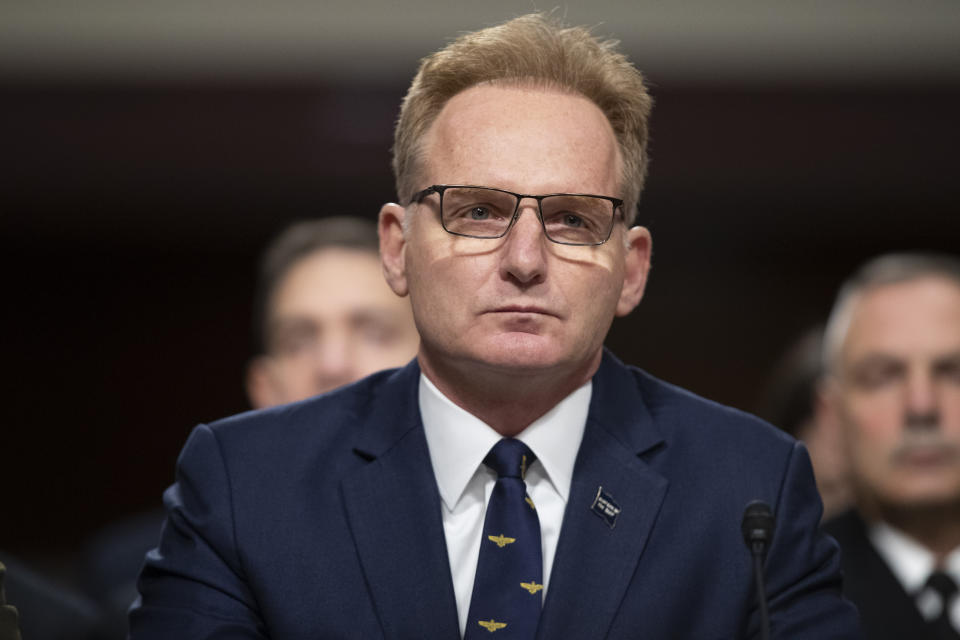
During his 15-minute speech, Modly repeatedly criticized Crozier, at one point describing him as being either a criminal leaker of sensitive information or else “too naive or too stupid” to command the ship. The acting secretary also veered toward self-pity, complaining about attacks he said had been directed at him and his family after he fired Crozier.
As soon as he had finished talking, Modly left the ship and was soon on his way back to Washington.
As he flew home, recordings of Modly’s speech were posted on social media — complete with some profane commentary from members of his audience — and picked up by news outlets. From there, his fate was essentially sealed. Congressional Democrats, including House Speaker Nancy Pelosi and members of the Senate and House Armed Services Committees, seized on his disrespectful comments about Crozier and demanded his resignation. Their Republican counterparts, in contrast, were mostly silent.
Modly first issued a statement saying he stood by “every word” of his speech. Then, apparently realizing how much trouble he was in, he quickly backtracked and issued a profuse apology. It wasn’t enough, and on April 7 he resigned.
By April 28, 970 Theodore Roosevelt sailors, about 20 percent of the crew, had tested positive for COVID-19. One had died of the disease and one remained hospitalized in Guam.
While those sailors should be at the forefront of the Navy’s collective thoughts, the service also needs to take stock of its missteps, said a former senior Navy official.
“The PR blunders and the black eyes and the losing of face and the acting secretary being fired, none of this had to happen,” he said. “The Navy needs to study this for years.”
_____
Click here for the latest coronavirus news and updates. According to experts, people over 60 and those who are immunocompromised continue to be the most at risk. If you have questions, please refer to the CDC’s and WHO’s resource guides.
Read more:



